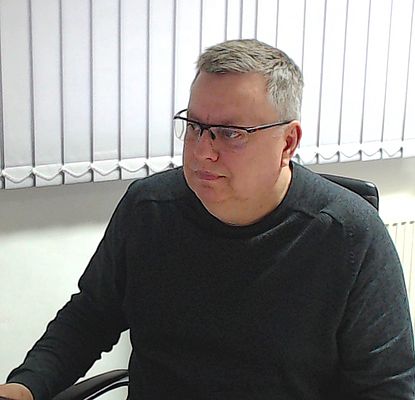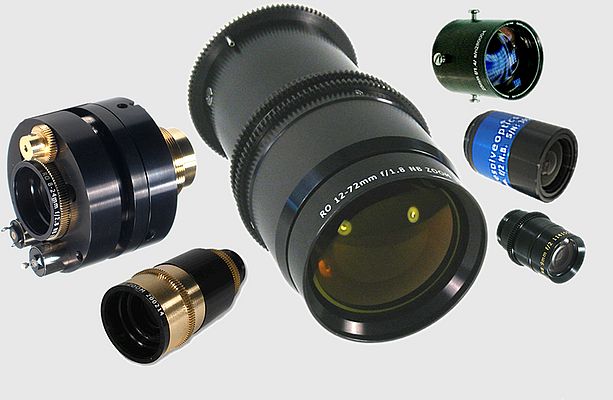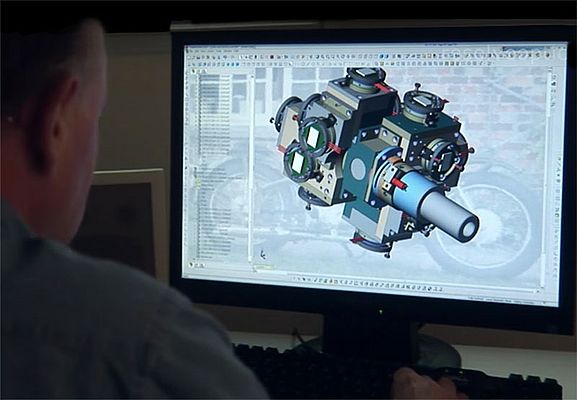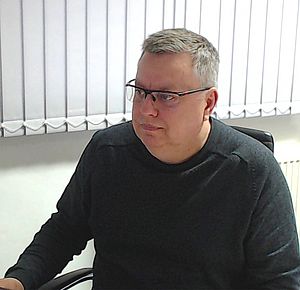PCN Europe: With the huge number of off-the-shelf optical systems one should think it shouldn’t be so hard to find the right one for individual requirements. Why isn’t that the case?
M. Pontin: Though adopting an off-the-shelf solution may offer an initial purchase price benefit it generally requires a compromise somewhere, be it resolution, operating field of view or size. You are unlikely to find an optimised solution of-the-shelf. In selecting the route to sourcing those vital optics that will give your product a competitive advantage or allow you to make a challenging measurement you should also take into account the hours that may have been spent looking for and test various lenses. A no commitment discussion with Resolve and we can advise what is required optically and offer an optimized custom solution to meet your exact needs.
PCN Europe: What is the range of industries you are working for? With all the different requirement that have to be covered, do you have all the competences you need to design a new product inhouse or do you work with partners?
M. Pontin: We have decades of experience of solving customer challenges in a diverse and growing range of areas that require an optical solution, including the Nuclear Industry, Aerospace. Automotive, Marine, Materials Testing, Petrochemical, Pharmaceutical, Surveillance and Broadcast TV. Investing in high quality staff allows us to undertake all Optical and Mechanical designs in house. Operating in a global marketplace we source glass and metal component manufactured parts from carefully selected partners in the UK and abroad who can offer us reliable high quality and stable pricing/ deliveries. Assembly and testing is carried out inhouse facility in Chesham, UK using a wide range of state-of-the-art equipment.
PCN Europe: What are the typical problems a potential customer wants to solve in a collaboration with you and how long could that process of problem-solving take?
M. Pontin: Our customer’s applications are very diverse and consequently there are few typical problems, every new project has its own unique requirements. In order to deliver an effective, optimised optical solution we make it our business to first fully understand the customers application and optical requirements before we develop and offer a solution. Our aim is to try and offer a theoretical solution and an estimation of costs within 7 days. If the customer is happy with the solution and the costs, we then proceed to fine tune the solution and produce a specification that they are happy to sign off on. Resolve will then commit to design and supply a lens that meets the specification. As a rule of thumb, a fixed focus design takes approximately 6 months from order to delivery of first prototypes. Zoom lenses take longer to their added complexity.
PCN Europe: Computer design and simulation processes are increasingly used alongside “old-fashioned” optical and mechanical testing to prove the quality of products. What quality assurance tools do you use to ensure reliable high quality from the lenses and optical systems you supply?
M. Pontin: Resolve Optics has invested in the latest 3D CAD and modeling software to ensure all our inhouse designed components are designed and machined to the highest standards. After inspection the lenses are assembled in our onsite cleanroom to ensure the lenses are assembled under clean dust free conditions to ensure reliable, high performance Our “old fashioned” optical testing is carried out on a state of the art fully automated MTF (Modulation Transfer Function) test bench that enables us to provide customers with detailed MTF curves, comprehensive distortion mapping and register distances with a click of a button. This test bench not only enables us to accurately qualify that all our lenses meet their specification.
PCN Europe: Digitalization is one of the big process industries trends across a wide range of product groups. Is this trend driving your business too?
M. Pontin: Lens designs are driven by advances in sensor technology. While most modern cameras and sensors may be digital their optical components will always be analog. Our customers are becoming more demanding in terms of resolution as achievable pixel size become smaller and sensors continue to grow in size. This new generation of very high-resolution sensors often require very extreme optical designs which are rarely available off-the-shelf. As resolution increases the higher order optical aberrations in a lens design become more and more difficult to correct. This is where Aspheric elements may be required or even selection of exotic glass types. This is why high-resolution lenses will cost more than standard definition lenses.
PCN Europe: Could you give our readers a description of the most extreme environments that optics you designed and produced have had to withstand?
M. Pontin: We have designed endoscopes that monitor the turbine blades in an operational gas turbine. This required the endoscope to withstand extreme temperatures, pressure and vibration. The solution required special bimetallic spacers that expanded and contracted at a similar rate to the glass elements which enabled the elements to remain tightly held and avoided the temperature and vibration from destroying the elements. This is just one pleasing example of where Resolve was able to develop an optical solution to enable a customer make measurements that they previously thought were impossible.
PCN Europe: Thanks for sharing your insights!






























